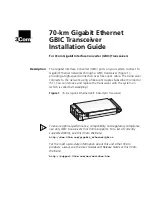
MDS 05-4846A01, Rev. H
SD Series Technical Manual
15
Figure 8. Port Sharing with Multiple Hosts Arrangement
Using Packet w/MAC Mode
Push Communication (Report-by Exception)
Push Communication, sometimes referred to as Report-by-Exception
(RBE), differs from polled response in that a Remote radio normally
transmits only when it has data to send. It does not depend on polling
from a Master radio to initiate transmission. Some typical characteristics
of push communication systems are as follows:
• Remotes transmit asynchronously
• May contain large amounts of data
• Buffering and flow control are used
DNP3 and IEC 104 are examples of protocols that implement push com-
munication. Note that both the serial and Ethernet versions of DNP3
support push communication.
IP Polling of Serial Remotes
The transceiver is ideal for use in systems employing a mix of serial and
Ethernet protocols. While many variations are possible, Figure 9 shows
a typical arrangement with an Ethernet host at the Master Unit that is
polling serial-based RTUs at Remote sites.
MASTER RADIO
HOST COMPUTER
(Host A)
To Ethernet Port
REMOTE RADIO
(One of several possible sites)
Radio Mode: Packet w/MAC
Ethernet
HOST C
HOST COMPUTER
(Host B)
Device Settings Screen
Serial
To COM2
Serial Port
Ethernet RTU Responding to
Host A
Serial RTU Responding to
Host B
Ethernet
REMOTE RADIO
(One of several possible sites)
Serial RTU Responding to
Host B
Co-located RTUs
Responding to
Different Hosts
















































